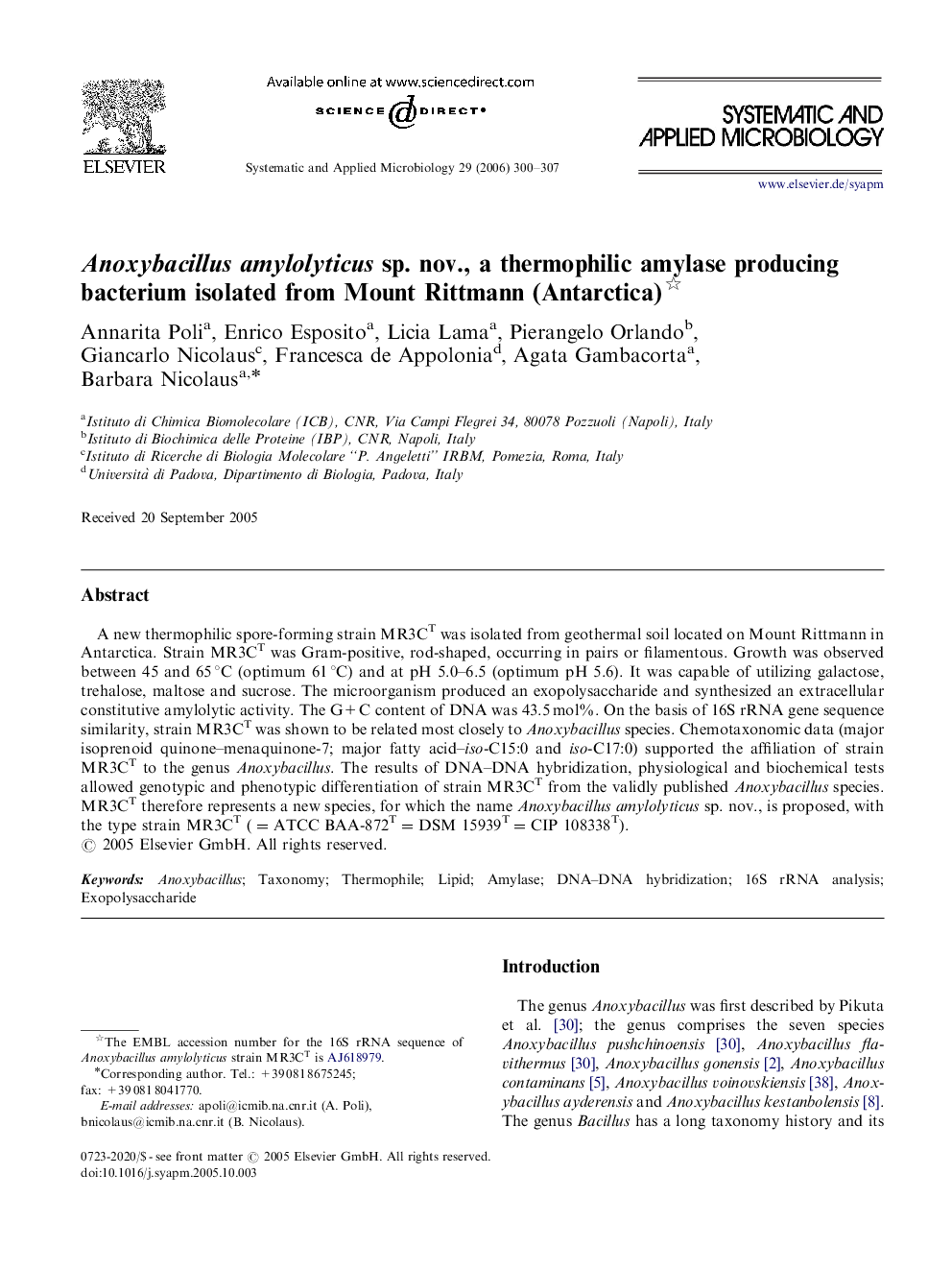| Article ID | Journal | Published Year | Pages | File Type |
|---|---|---|---|---|
| 2063686 | Systematic and Applied Microbiology | 2006 | 8 Pages |
A new thermophilic spore-forming strain MR3CT was isolated from geothermal soil located on Mount Rittmann in Antarctica. Strain MR3CT was Gram-positive, rod-shaped, occurring in pairs or filamentous. Growth was observed between 45 and 65 °C (optimum 61 °C) and at pH 5.0–6.5 (optimum pH 5.6). It was capable of utilizing galactose, trehalose, maltose and sucrose. The microorganism produced an exopolysaccharide and synthesized an extracellular constitutive amylolytic activity. The G+C content of DNA was 43.5 mol%. On the basis of 16S rRNA gene sequence similarity, strain MR3CT was shown to be related most closely to Anoxybacillus species. Chemotaxonomic data (major isoprenoid quinone–menaquinone-7; major fatty acid–iso-C15:0 and iso-C17:0) supported the affiliation of strain MR3CT to the genus Anoxybacillus. The results of DNA–DNA hybridization, physiological and biochemical tests allowed genotypic and phenotypic differentiation of strain MR3CT from the validly published Anoxybacillus species. MR3CT therefore represents a new species, for which the name Anoxybacillus amylolyticus sp. nov., is proposed, with the type strain MR3CT (=ATCC BAA-872T=DSM 15939T=CIP 108338T).
